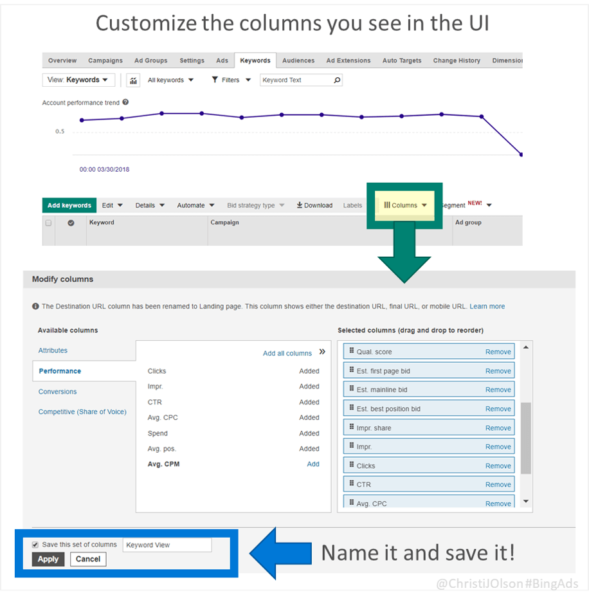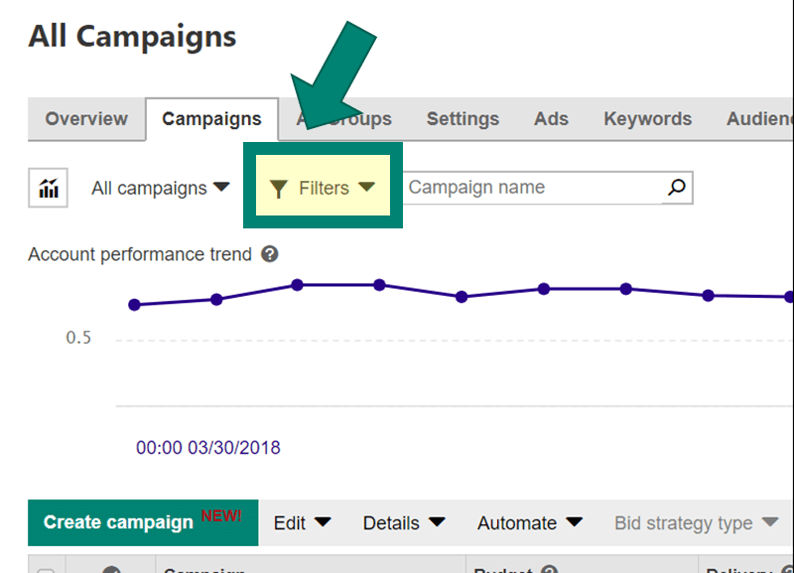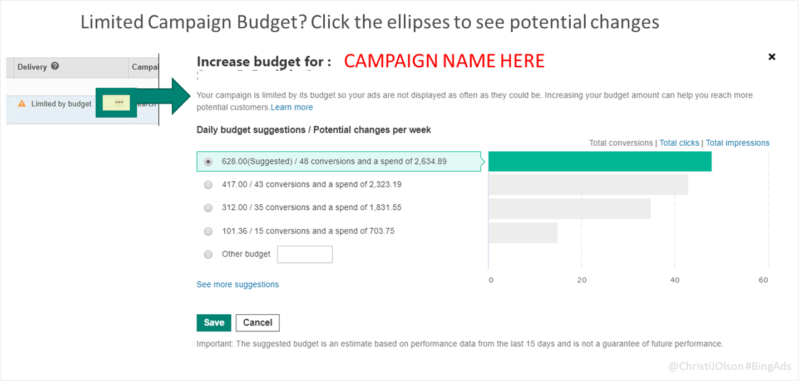 Wouldn’t it be lovely if you had enough time in the week (or even day) to get through your to-do list?
Wouldn’t it be lovely if you had enough time in the week (or even day) to get through your to-do list?
Maybe you are new to search and juggling the management and optimization of multiple accounts. Or maybe you are a small business owner trying to allocate inventory or find someone who can fill Suzy’s shift because she didn’t show up today.
On top of all of it, you have to promote yourself to keep people coming in the door! It is tough and stressful to handle so many things at once.
To help with all this, I have five super helpful tips (plus a bonus!) I’d like to share. You can use each to on keep on top of your paid search campaigns in as little as 30 minutes.
Start small
It’s better to spend 10 or 15 minutes each week, or even 30 minutes a month, managing your search campaigns than to get overwhelmed and spend no time at all.
Why? Tackling a few incremental changes at a time can add up and can help you manage your spend and goals more effectively without stressing you out.
Start with a solid foundation
Before I get into my time management tips, there is one thing you must have to manage the effectiveness your search campaigns, and that is to deploy both analytics and Bing Ads universal event tracking (UET) on your website.
It sounds complicated, but it’s not. It’s a matter of placing a few lines of code within your hypertext markup language (HTML). This will give you access to the data you need to enable you to tell what is or is not performing in Bing and Google tools.
This code allows you to set up conversion events, which are the actions on your website you want your customer to take. This could be filling out a lead generation form or completing a sale, or it could be another action you want to track, like downloading a product documentation or signing up for a trial/newsletter.
Without implementing conversion tracking, you won’t be able to tell which keywords or ad copy are driving searchers to your desired goal.
Five tips
What I am going to share isn’t rocket science, but there is both an art and science to optimizing paid search.
The good news is that both Bing and Google have updated their user interfaces (UIs) to make it easier for individuals to manage their paid search campaigns quickly and effectively. There are tons of great articles about identifying and tracking conversions and setting your key performance indicators (KPIs) and goals, and you’ll want to know those items before you start to optimize.
I do want to say this isn’t a definitive list, but it’s a good starting place, especially for those who have limited time. Even five minutes spent in your account making small tweaks will add up over time and is better than not spending any time at all.
The gains you see can be incremental. For example, if you have one keyword that is eating up 10 percent of your budget but hasn’t received a single conversion, and you pause it, you’ll give your campaigns more opportunities across the remaining keywords in the account. Now, let’s get started!
1. Customize the UI
The first thing you should do is set yourself up for success for the present and the future. You can customize the UI so that it shows exactly what you want to see every time you log in.
A. Customize what you see in visible columns
I typically create two or three different column views, depending on what I’m looking at and what I’m trying to do. For instance, when I’m in the campaign or ad group view, I typically want to look at high-level metrics, including my current performance and my share of voice. When I’m at the keyword level, I want to include quality score, estimated first page bid and estimated mainline bid, in addition to my conversion and performance metrics.

B. Filters are your best friend
Forget diamonds. Filters are your best friend. Using filters is one of the biggest time-savers ever.
It takes a few minutes to create and save a filter you’ll use over and over again and will help you optimize with ease.
Here are a few filters I’d recommend starting with:
- Top converting.
- Zero conversion, clicks.
- High spend, poor performance.
- Position less than four.
- Low quality score.
- Impression share (SOV) less than 50 percent.
- Cost per acquisition (CPA) above $xx.xx (your target cost per acquisition. I typically set this at 10 percent above).

2. Manage your campaign budgets
I believe in starting at the top and quickly working my way down and through the account. One of the challenges a lot of accounts face is having a limited budget, meaning that based on the keywords within the campaign, you could spend more budget then is currently allocated to the campaign. You are missing the opportunity to reach people who are searching for your targeted keywords.
My recommended option is to use shared budgets. Why?
Because most of the time, getting an additional budget isn’t an option and shared budgets use funds redistributed from low-spending campaigns to campaigns with the ability to spend the budget.
If all of your campaigns are on a limited budget, then you’ve most likely cast too wide a net.
Start with checking your budgets associated with your campaigns. Here’s what to look for:
- Limited budget campaigns.
- Campaigns not spending their daily budget.
Once you’ve checked, you can look at how you’ve currently allocated the daily budget across your campaigns and move budget from underperforming campaigns to the performing campaigns.

If you are meeting your cost per acquisition goals across the board and can get an incremental budget, you can increase the daily budget on limited campaigns. If you click the ellipses near limited budget, you can see what the spending potential is of that specific campaign.
If you are running a campaign targeting your brand or business name (also known as a brand campaign), you most likely want to keep the budget higher then the average daily spend. That way, people looking for you can find you.
If you are a small business, this campaign might be your lifeblood, since it’s probably how people search and find you. You’ll still want to target other keywords to reach people who don’t know about your business — but make sure you keep your brand campaigns live and active.
The last option that has nothing to do with budget settings is to evaluate the keywords you are targeting and see if you have cast too broad a net based on your budgets.
For instance, if you have a $100 per day budget and are targeting thousands of keywords, you will most likely have budget issues that go beyond what can be solved in “campaign budget settings.”
Why? There will be more demand for people searching for your target keywords than the budget you have allocated. I recommend prioritizing the keywords you are targeting and scaling back so that your ads are showing for your keywords throughout the day.
3. Filter quick bid optimizations and pause poor performance
This is where filters and the custom views come into play. After I look at the campaigns, I typically dive straight into my keywords.
It’s not that I don’t think ad groups are important, but I’m on a mission, and I have limited time. Create a list of the filters and quickly go through and use them.
Let’s look at what I’m looking for within each of the filtered views.
A. Top converting keywords (now and in the last 30 to 60 days)
Here are the keywords that are driving the conversions within your account.
- Are the keywords that are converting doing so within your CPA targets?
- What keywords are performing?
- Are they the same keywords as you had in the last one to three months?
- Are there keywords that worked well in the past quarter that disappeared and aren’t working well today?
Not seeing any conversions? Do a double-take. How many conversions do you normally see in a month?
If you typically have few to no conversions, then there might not be a reason to worry. I’d still dig into the account to troubleshoot to make sure there are no bigger issues.
Things like expired credit cards affect ads being displayed — or if you had an update on your website and the analytics and UET tracking code were accidentally turned deleted — both will cause conversion issues.
B. CPA filter
Create a filter to quickly view keywords that perform above your cost per acquisition (CPA) target.
I typically recommend creating the filter above your target CPA; what percentage should be based on your risk threshold. You’ll most likely have some conversion come in at a rate higher than your target, and some conversions will be at a rate lower than your target. As long as the average CPA is close to the target, then you might not need to lower the bids.
However, this will help you to identify outliers. Are there keywords driving conversions 2x to 3x higher than your target? Those might be keywords you’d consider decreasing your bids on to bring them in line with your goals.
C. High spend, poor performance
These are the keywords you should consider pausing or decreasing the bids on due to poor performance.
D. Zero conversions, clicks
Here are the keywords that have had no conversions but are receiving clicks. This set of keywords is where the art and the science of pay-per-click (PPC) optimization comes into play.
There are a handful of factors from click-through rate and position you should look at to determine if you should increase or decrease the bids or pause the keywords. This could also be a signal to look at optimizing ad copy and/or landing pages.
E. Low quality score
Here you have keywords that you’ll have to pay a bit more to have in higher positions due to the low quality score. They represent potentially higher-than-average costs, as well as an opportunity.
Let’s start with the costly part: Keywords with a low quality score will cost you more to appear in the search results than keywords with a higher quality score.
They are also an opportunity, because quality score is a great diagnostic tool for relevance. The lower the quality score, the less relevant the search engines are finding your keywords to the search query, the ad copy, the landing page or all of the above. It doesn’t mean the ad won’t appear, it just means you have to increase bids to be eligible to appear.
If you are really tight on budget or have many limited budget campaigns and are at or over your CPA target, these terms could be paused while you troubleshoot why your quality score is low. You can also determine if it can be fixed for these keywords.
F. A position less than 4
Here are the keywords outside of the mainline of the search results. There are opportunities to increase bids to increase the visibility into the main line. Use the main line bid recommendation.
G. Impression share (SOV) less than X percent
Here are keywords that have the opportunity to have more impressions served against them.
You can choose the threshold you want for the percentage. I typically set the impression share at 50 percent of the base so I can see keywords that have an opportunity to, at a minimum, double their impressions. What I look for here is whether any converting keywords are appearing.
4. Use the opportunities tab
The opportunities tab is a no-brainer. It’s something everyone should look at to see what the search engines are highlighting and summarizing as opportunities for quick optimization wins.
Always, always, always look here to see what’s recommended. You don’t have to take the recommendations, but this is one way the search engines are using artificial intelligence (AI) to help optimize your accounts.
5. Search terms report
Within the keywords tab is the search terms report. It’s a great place to find potential negative keywords, or new potential keywords I should add to my account, either in the same or a new ad group.
I almost always spend at least two to five minutes in this report because of the savings potential for removing queries. Let me give you a quick example:
I worked on a local business account whose name included the word, “Level.” I quickly discovered in the search terms report a ton of unrelated gaming queries, such as “How do I beat level 10 in [insert game name here].”
While the ad copy clearly stated that the business had nothing to do with video gaming, my client saw 20 percent of their budget going to these irrelevant queries. I moved our brand keywords to exact match only, then added several phrase match negatives into the account like “beat level,” “how do I beat.” We saw the overall CPA decrease and a larger variety of keywords appear in the search results, helping drive awareness and conversions for the products and services being sold.
I always cheat and find myself adding in one or two additional things that are so important I don’t want individuals to overlook them.
You should look at your ad copy at least once every quarter and spend a little bit of time trying something new.
6. Update and optimize your ads
Bonus: If you’ve done everything in the list above and only have 30 minutes, you can’t do a ton of ad-copy testing, but you can slowly and surely add the appropriate extensions to your ads to help improve overall performance. Here are four issues and their fixes:
- Issue: Do you have multiple products or services?
- Fix: Use sitelinks extensions to highlight them within your ad copy.
- Issue: Do you have a physical location?
- Fix: Add location extensions so that potential customers can find your address and phone number.
- Issue: Are you selling products and already have shopping campaigns running?
- Fix: Add the price extension.
- Issue: Do you have a special promotion going?
- Fix: Add the promotion extension. Just remember to set your start and end dates based on when the promotion will be running.
So there you have it. My five tips plus a bonus for where you start if you have limited time but want to optimize your search campaigns.
Contributing authors are invited to create content for Search Engine Land and are chosen for their expertise and contribution to the search community. Our contributors work under the oversight of the editorial staff and contributions are checked for quality and relevance to our readers. The opinions they express are their own.


